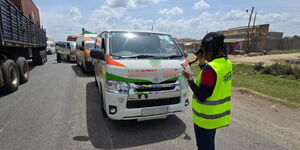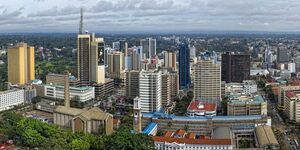Kenya's coastal city of Mombasa is characterised by unique landmarks with the most famous being the iconic tusks that stand tall along Moi Avenue.
Dating back to 1952, the tusks were originally erected in honour of Queen Elizabeth's visit to Mombasa. The then Municipal Council had caught wind that the Queen would head to the Yachting club from the Mombasa airport.
However, at the time, the tusks were made of wood as it was meant to be a temporary landmark that was to be pulled down shortly after the Queen's return to Britain.
The tusks ultimately became a tourist attraction for both locals and travel agencies due to its proximity to Uhuru Gardens. Merchants began to associate their products with the tusks which led to the growth of their businesses.
"When the Queen completed her stay in the city, the Municipal Council did not bother to remove them and by then, locals used to throng the place for leisure as they had become an attraction site,” Raphael Abdulmajid, the head of historical education at Fort Jesus, stated during a past media interview.
The tusks' popularity led to the Municipal Council devising plans to preserve them. However, over the years, the tusks began to wither due to the weather conditions.
Four years later, Queen Elizabeth's sister, Princess Margaret, announced plans to visit Mombasa, which caused great excitement among locals.
The Municipal Council decided to recast the tusks with aluminium materials in a bid to endure the tough weather conditions. During the modifications, the tusks were also put into two lanes which coincidentally formed the letter M.
"The government also put strict measures against those who used to put commercial announcements and decided to be the custodian of the symbolic tusks,” Abdulmajid stated.
“At first, Moi Avenue was just a one-lane road and there were only two tusks, later on, the lanes were added to four when the road became a two-lane road, hence the formation of the letter M," he added.
Over the years, the tusks have become a permanent symbol and a tourist attraction for the county. In 2017, the County Government of Mombasa refurbished the tusks, which now consist of a model elephant at the centre.












